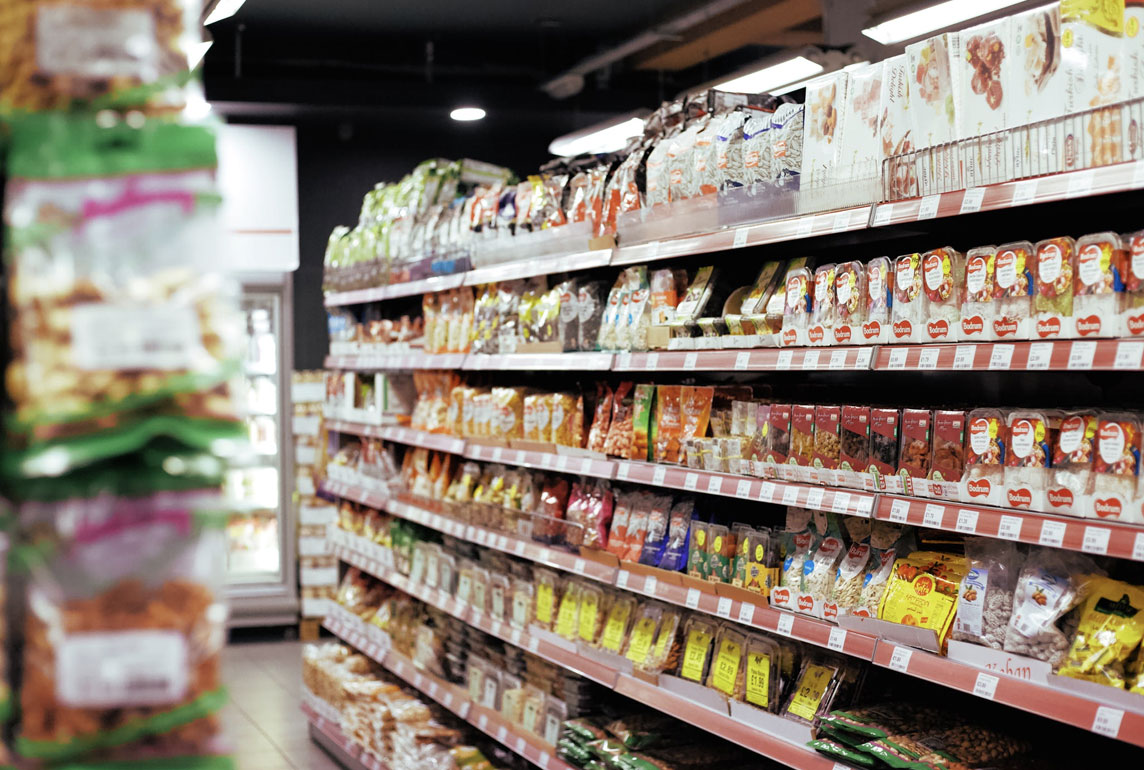Feb 27, 2020 by Mark Dingley
Did you know that the value of packaging produced in in Australia is $10-10.5 billion, with the food and beverage sector using between 65-70% of all locally produced packaging?

Packaging isn’t just the protective barrier between your product and the outside world, it is also a product in itself! Designed to introduce, protect, display and preserve its contents, your packaging is an item that needs to be manufactured and assembled.
Main packaging categories
The packaging that you choose is critical to the success of your product – it ensures the product arrives in store and into customers’ shopping bags without issue.
The materials that you choose for your product packaging will have a considerable impact on the end result. In Australia, paper and cardboard are the most common single packaging material in use, making up about 36% of the total Australian packaging market. Plastics follows at 30%, then metal at 20%, glass at 10% and other materials make up the remaining 4%.
The material you choose is dependent on your product and your processes. The material needs to be flexible enough to withstand product promotions, new products, variants and SKU changes. Recently, developments have led to lighter weight, higher performing materials that can minimise storage requirements and transport costs, all whilst maximising the appeal and value of the product.
Assess any modifications that your production line processes and equipment may need.
Sustainability is a growing issue for businesses across the country. Manufacturers must constantly try to reduce their waste and the impact their business has on the environment, without losing product security in the process (that is, not enough packaging to keep the product fresh and tamper-free).
Another major factor to consider is cost. There are a number of ways to drive down packaging costs – but what will thus mean for your brand image? For instance, whilst plastic bottles are the cheaper option, if you want your packaging to reflect a premium quality product, a glass bottle may serve your business better in the long run.
Considering how your product will be stored and distributed is as important as the design of the product itself. This is where your supply chain comes in.
Firstly, what environment will your products be exposed to? In Australia, the packaging must withstand our harsh climate, from extreme temperatures, to moisture and vibration, dust and other conditions.
Indeed, effective packaging can keep the whole supply chain moving efficiently. In Australia, it is estimated that perishable items make up 50-60% of supermarket sales, with 5-7% lost through poor inventory management. With the right labelling and coding, you can enable seamless movement of your product from facility to the supermarket shelf. It can also improve your stock turnaround speeds, stock accuracy and improved tracking capabilities in the case of recalls and withdrawals. All of these factors combine to reduce your wastage.
Lastly, it’s important to be aware of the requirements for the information used on the packaging. For instance, what will your retailer need the logistics label to include? Taking this into account can be the difference between getting your product onto the shelf or dealing with costly returns.
You could have the best product in Australia, but if the packaging isn’t attractive, how will people know to pick it up in the first place? That’s why we can’t underestimate the importance of shelf appeal. With an impressive 70% of purchasing decisions made in-store, eye-catching packaging is a must for attracting buyers toward your product on the shelf.
It also acts as an invaluable vehicle for relaying information about your product, ensuring potential customers know exactly what they are buying.
Not convinced? Take a look at the impact of plain packaging laws on cigarette sales. This has led to the biggest smoking decline Australia has seen in 20 years!
Despite the importance of attractive packaging, only one in five consumers are satisfied with packaging today. For that simple reason alone, it’s worth spending a bit more time and effort getting it right the first time. Your customers want convenient, easy to open (yet tamper proof), environmentally conscious and attractive packaging – all whilst remaining functional!
As we’ve said above, packaging is an important factor in the perceived quality of a product. You need to satisfy customers at all stages of the product lifestyle to build brand loyalty and increase the chances of repeat purchasing.

If you’re designing your own packaging, it isn’t enough to simply look at it from a single point of view. From the perspective of a customer, consider how it can add value to the product within and deliver a complete experience. Will it help your brand connect with consumers to increase sales and build loyalty?
As a business owner, how will it drive your business goals? Can the packaging process be optimised? It isn’t enough to consider the packaging now, but also the future directions and trends you may want to follow.
Continuous innovations in the packaging industry create solutions that meet both sets of requirements. For instance, plastic liquid pouches can increase the shelf-life of a product, reduce your carbon footprint, and are cheaper and easier to transport – all the while remaining attractive and easy for the customer to use.
To ensure your packaging is performing to the best of its ability, consult with a professional who understands your processing requirements, including the impact of packaging on the customer. Make Matthews your number one choice – talk to our team today.